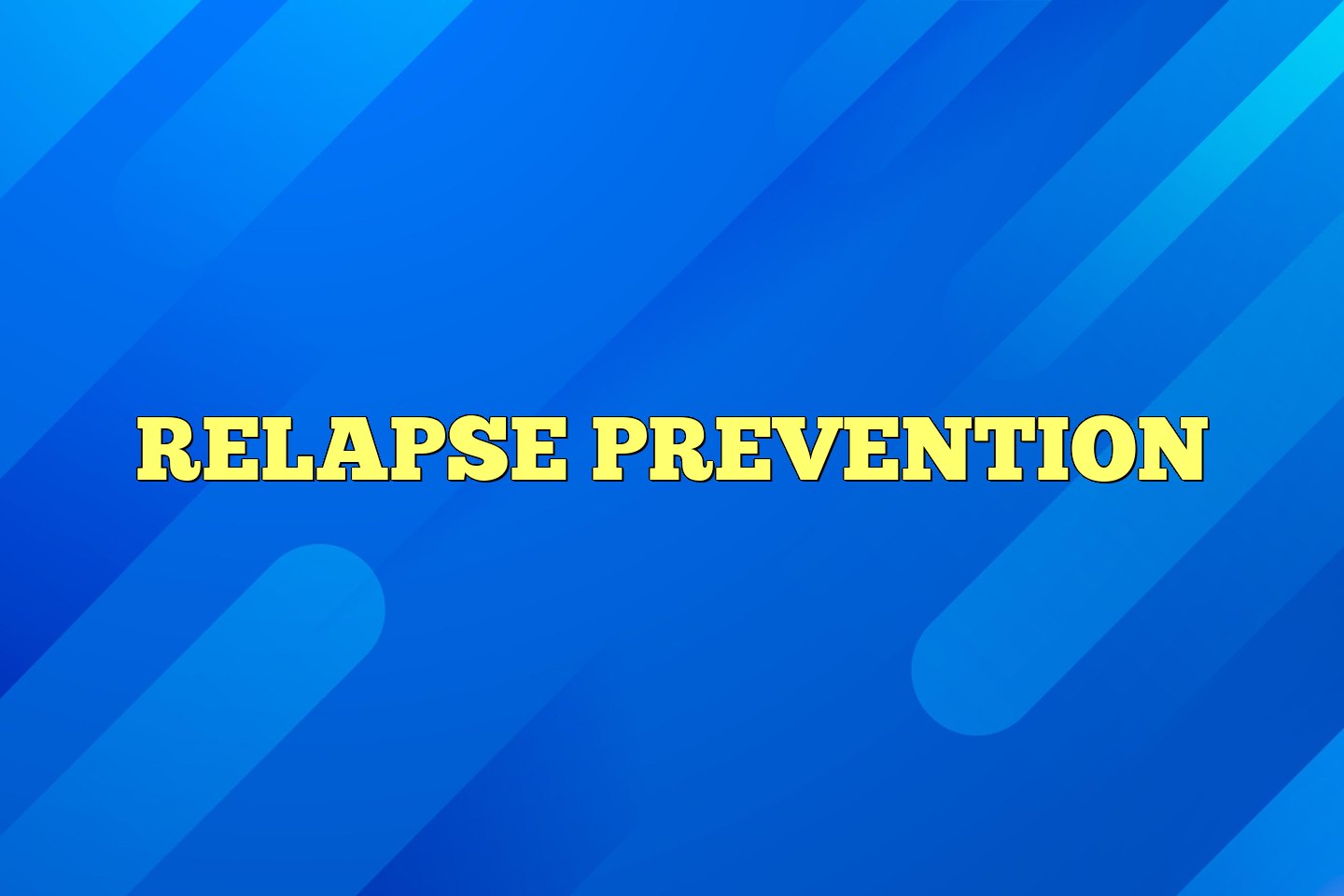Relapse is a common challenge faced by individuals recovering from addiction or other behavioral issues. It refers to the recurrence of problematic behaviors after a period of abstinence or improvement. Many people who have successfully overcome their addiction or behavioral problems may experience relapse at some point in their journey. Therefore, it is crucial to develop effective strategies to prevent relapse and maintain long-term recovery. In this article, we will discuss some of the most effective strategies for preventing relapse and provide insight into how individuals can incorporate them into their recovery plan. By understanding these strategies and implementing them in their daily lives, individuals can increase their chances of maintaining their sobriety and achieving a healthier, happier life.

Relapse prevention, or RP for short, is a cognitive-behavioral approach with the goal of identifying and preventing high-risk situations such as substance abuse, obsessive-compulsive behavior, sexual offending, obesity, and depression.
Underlying Assumptions
Relapse is seen as both an outcome and as a transgression in the process of behavior change. An initial setback, or lapse, may either translate into a return to the previous problematic behavior, known as relapse, or into the individual turning again towards positive change, called prolapse.
Relapse is thought to be multi-determined, especially by self-efficacy, outcome expectancies, craving, motivation, coping, emotional states, and interpersonal factors. In particular, high self-efficacy, negative outcome expectancies, potent availability of coping skills following treatment, positive affect, and functional social support are expected to predict positive outcome. Craving has not historically been shown to serve as a strong predictor.
Efficacy and Effectiveness
Carroll et al.. conducted a review of 24 other trials and concluded that RP was more effective than no treatment and was equally effective as other active treatments such as supportive psychotherapy and interpersonal therapy in improving substance use outcomes. Irvin and colleagues also conducted a meta-analysis of RP techniques in the treatment of alcohol, tobacco, cocaine, and polysubstance use, and on the basis of 26 studies reviewed, concluded RP was successful for reducing substance use and improving psychosocial adjustment. RP seemed to be most effective for individuals with alcohol problems, suggesting that certain characteristics of alcohol use are amenable to the RP.
RP and Systems Theory
Some theorists, including Katie Witkiewitz and G. Alan Marlatt, borrowing ideas from systems theory, conceptualize relapse as a multidimensional, complex system. Such a nonlinear dynamical system is believed to be able to best predict the data witnessed, which commonly includes cases where small changes introduced into the equation seem to have large effects. The model also introduces concepts of self-organization, feedback loops, timing/context effects, and interplay between tonic and phasic processes.
Jumnoodoo and Coyne, in north London UK, have been working with Service users and carers over the past ten years to transfer RP theory into the field of adult mental health. The uniqueness of the model is the sustainment of change by developing service users and carers as ‘experts’ – following RP as an educational process and graduating as Relaspe Prevention Practitioners. The work has won many national awards, been presented at many conferences and has resulted in a number of publications.
GORSKI/CENAP RELAPSE PREVENTION MODEL
Terence T. Gorski is an internationally recognized expert on substance abuse, mental health, violence, & crime. He is best known for his contributions to relapse prevention, managing chemically dependent offenders, and developing community-based teams for managing the problems of alcohol, drugs, violence, and crime. He has extensive experience working with employee assistance programs (EAP) and has special expertise in working with emergency professionals including fire, medical, and law enforcement. He is a prolific author and has published numerous books and articles.